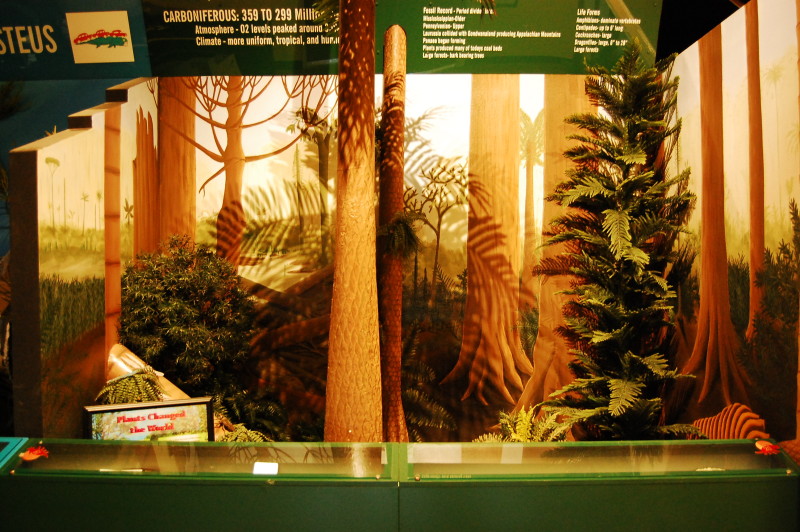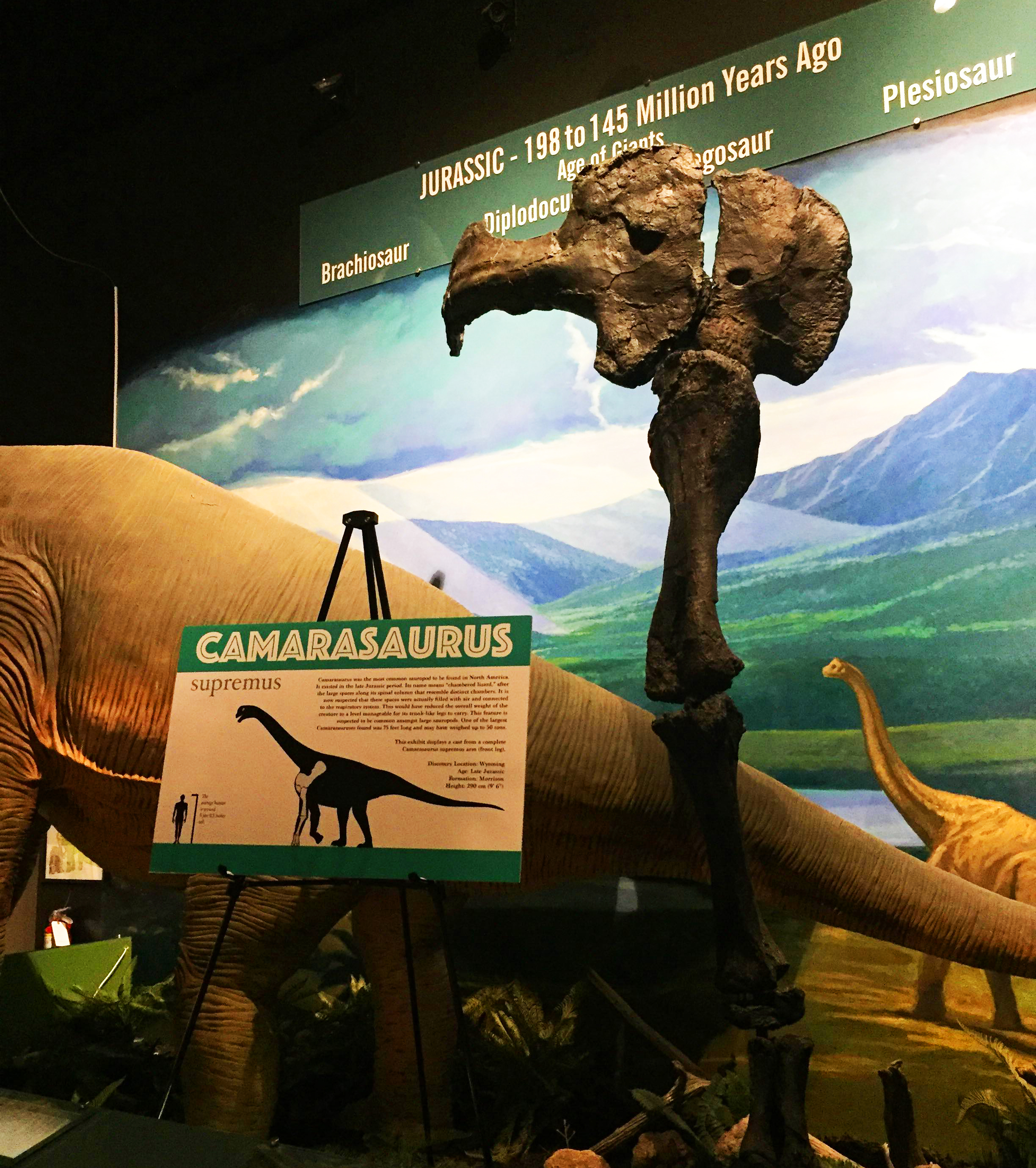Here you will find in the fossil cases and in the diorama an excellent representation of all life forms that existed during the Ordovician Period.
Nautiloids were the dominant predators at this time. The Ordovician is best known for its marine
invertebrates, including trilobites and brachiopods. A typical marine community consisted of these animals, plus red and green algae, primitive fish, cephalopods, corals, crinoids, and gastropods. This is also the time when Coral began to grow in the ocean. The super continent, Gondwana slowly shifted to the South Pole and the land mass was covered in a glacier that dropped the sea level. These events caused many species of life forms to become extinct.
In case A we have fossilized chrinoids. Chrinoids are a species of echinoderms. They have radial symmetry and are sometimes known as sea lilies.
In case B fossilized Carpoids can be found. Carpoids are related to the Echinoderms but are unique because they do not have radial symmetry but are asymmetrical.
The Starfish in Case C first appeared in the Ordovician and looked very similar to the ones we have
today. Starfish have survived many extinction events and their appearance has changed very little throughout time. Coral first appeared at this time and since then have flourished in the ocean.
In case D we have fossils of Coral that date to the Ordovician period and are similar to the most primitive Coral that we have in today’s oceans.




